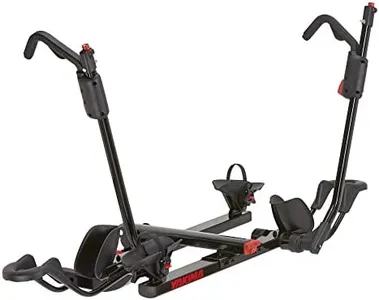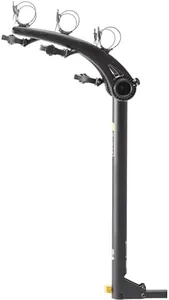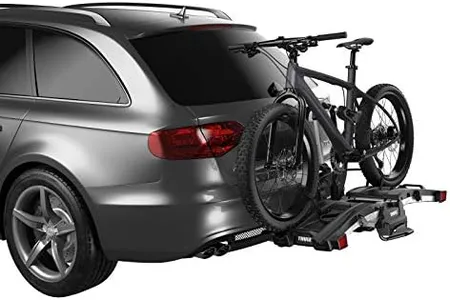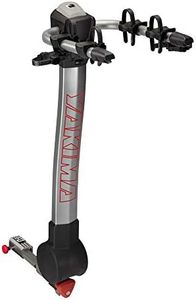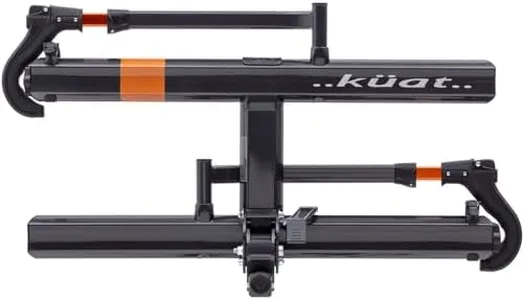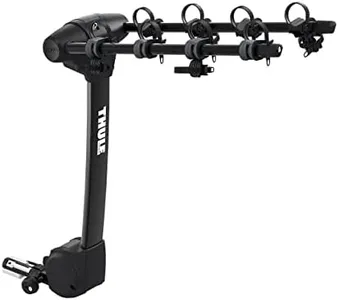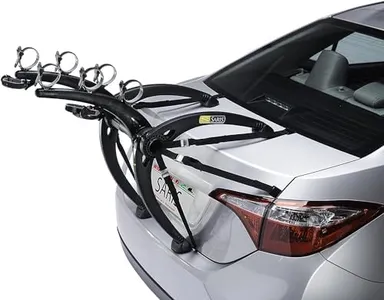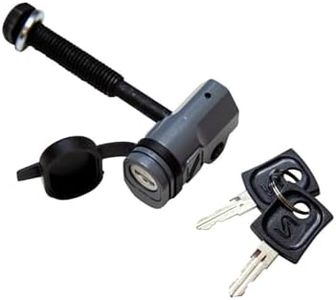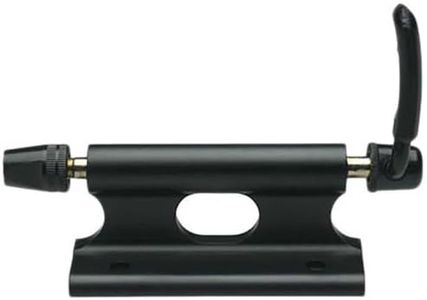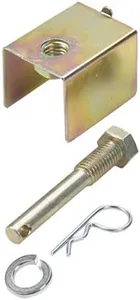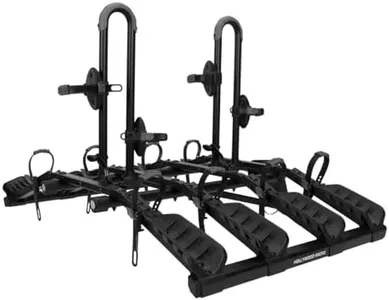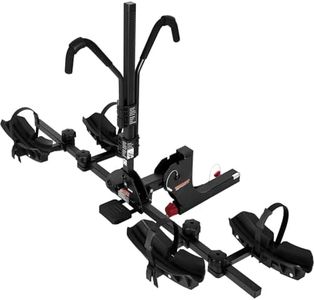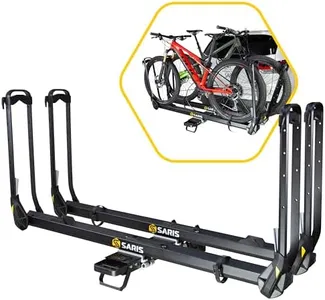10 Best Hitch Mounted Bicycle Racks 2025 in the United States
Our technology thoroughly searches through the online shopping world, reviewing hundreds of sites. We then process and analyze this information, updating in real-time to bring you the latest top-rated products. This way, you always get the best and most current options available.

Our Top Picks
Winner
Saris Bones 3-Bike Hitch Rack Bicycle Carrier, with Easy Fold Design and Tilting Base
Most important from
4378 reviews
The Saris Bones 3-Bike Hitch Rack is a solid choice for anyone needing to carry up to three bikes at once, with each arm supporting up to 35 pounds. It fits both 1.25” and 2” hitch receivers, so it works with most cars and SUVs. One of its handy features is the tilting base, which lets you access your vehicle’s trunk even when bikes are loaded, saving you the hassle of removing the rack.
The rack is made from rust-resistant materials and has injection-molded arms, which makes it both durable and lightweight at around 16 pounds. When not in use, its arms fold down to a compact size, making storage and parking easier. While it doesn’t have built-in locks, the sturdy mounting and design offer decent security when paired with your own bike locks.
It’s generally easy to install and use, though some users mention that bikes with unusual frames might require extra care in securing. If you want a reliable, convenient rack for regular bike trips with up to three bikes, this model balances strength, flexibility, and space-saving features well. However, if you need advanced built-in security or carry heavier bikes, you might want to consider other options.
Most important from
4378 reviews
Thule EasyFold XT 2 Hitch Bike Rack , Black
Most important from
1094 reviews
The Thule EasyFold XT 2 Hitch Bike Rack is a high-quality option for those needing to transport e-bikes or heavy mountain bikes. With a load capacity of 130 lbs (65 lbs per bike), it can handle even the heaviest bikes with ease. It fits both 1.25-inch and 2-inch receivers, making it versatile for various vehicles.
The integrated folding bike loading ramp and tool-free installation simplify the setup process, and the ratcheting wheel straps and torque-limiting knobs ensure your bikes are securely attached. Additionally, the rack can be fully folded and features transport wheels and a carry handle for easy maneuverability when not in use.
The smart foot pedal tilt allows for quick access to the trunk, and built-in locks provide extra security for your bikes and the rack itself. However, users need to verify compatibility with their vehicle's receiver hitch. While it offers many conveniences, including the option for a Thule Fat Bike Wheel Strap Kit for larger tires, this rack is on the pricier side and might be overkill for those with lighter or fewer bikes. It's an excellent choice for serious cyclists with specific needs, but casual users might find it more than they require.
Most important from
1094 reviews
Yakima RidgeBack Tilt Away Hitch Bike Rack Carries Up to 2 Bikes, Fits 1.25 and 2 Inch Hitch Receiver for Cars, SUVs, and Trucks, Black
Most important from
1466 reviews
The Yakima RidgeBack Tilt Away Hitch Bike Rack is designed to carry up to 2 bikes and is compatible with both 1.25-inch and 2-inch hitch receivers, making it versatile for use with cars, SUVs, and trucks. Its construction boasts a durable aluminum frame with a powder coat finish, promising long-lasting performance.
The rack features an UpperHand Lever that allows easy tilting for vehicle access and folds flat for storage, adding to its convenience. Bikes are securely fastened with ZipStrips, and anti-sway cradles help prevent bike-to-bike contact during transport. The tool-free SpeedKnob simplifies installation, making it a hassle-free process.
With a load capacity of 32 pounds, it may not be suitable for heavier bikes. Customer reviews reflect a positive experience, with a 4.3 out of 5-star rating from 1,448 reviewers, highlighting its reliability and ease of use. This bike rack is a great option for families or individuals who need to transport up to 2 bikes securely and conveniently while enjoying features that enhance ease of access and storage. The product's durability and thoughtful design features make it a strong contender in the hitch-mounted bike rack category.
